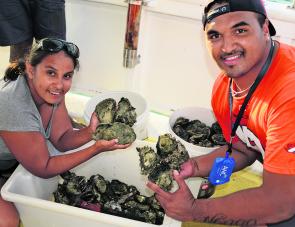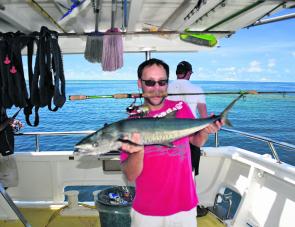Travelling the Cape in July is a pleasurable experience and perhaps the best time for southerners to appreciate the full potential of the tropics. What would you rather do: suffer the cold weather of a south Queensland winter or experience hungry fish biting their heads off in warm tropical weather? It’s more than enough reason to jump in your 4WD with a few mates for a northern sojourn.
And while we are asking questions, what is the best way to clear the cobwebs in your favourite tackle? The answer is simple: head out in July, search for birds and baitfish and then toss or tow your favourite flashy imitations at tuna, trevally, mackerel and queenfish. The many shoals, reefs and current lines littering the coastline of Cape York are full of all these silvery speedsters.
For the uninitiated Spanish mackerel angler, catching one of these fish can be the most exhilarating experience possible. They are big, they are fast, they are relatively plentiful and they taste absolutely delicious if bled, chilled and filleted correctly.
If you want to catch a mackerel, find a shoal or reef edge with a little current running past or pushing up against it and baitfish hanging around. There are too many techniques to discuss in one report, but trolling a few large bibbed minnows somewhere between 4-8 knots in the wash is as good a way as any to get your rod bent.
One of the most predictable fish to catch during the early mornings and late afternoons in July is the queenfish. You’ll find schools blitzing baitfish of every shape and size. I have cast tiny silver slugs to 20cm queenies feeding in a creek mouth current line in July and I have cast 15cm poppers to marauding metre-long models kilometres upstream.
Queenies aren’t given much credit for their eating qualities, but after years spent catching them I can vouch for a few cooking methods which appeal to some fishos. Besides just eating the skinless, boned-out fillets dusted in crumbs or flour and fried, there are various ways to prepare ‘nummus’, which is fish cooked in vinegar or acidic juice such as lemon or lime juice. Using firm, fresh queenfish or trevally fillets sliced thinly is perfect.
If you find yourself at the river mouth of a large west coast river at this time of year as a high tide begins to recede, it is more than likely a few species of trevally will be kicking around the sand bars, gutters and current lines. These trevally come in many shapes and sizes, including golden, giant, diamond, fringe finned, Papuan and turrum. They are often found swimming side by side with similar species such as permit.
Another fish which can light up a fishing session close to shore, roving around in packs of similar sized fish, is blue salmon. They are voracious feeders and, like queenfish, they demonstrate predatory vigour all the way from juveniles to adults that push a metre in length and go like the clappers!
What July lacks in terms of warm water and rewarding barramundi fishing, it can well and truly make up for in variety. Anglers who love casting soft plastics, flies, jigs and slices around will be well rewarded in the clear, fish-filled shallow waters of Cape York.
Sadly, some anglers cannot push past the need to go barra fishing when they are in the far north and can sometimes leave the Cape a little disheartened after a trip in July. If you want a northern trip to remember, try to keep your expectations realistic and fish for the species that are really on the chew.
Having said that, many a wily old-timer would be smirking with the thought of casting live baits into a proven deep hole and awaiting the sly gulp of a big old barra!
Reads: 1059
Some nice oysters gathered on a remote island rocky foreshore.

A small Spanish mackerel caught on light gear next to a reef edge.

Various species of trevally are kicking around the river mouths.




